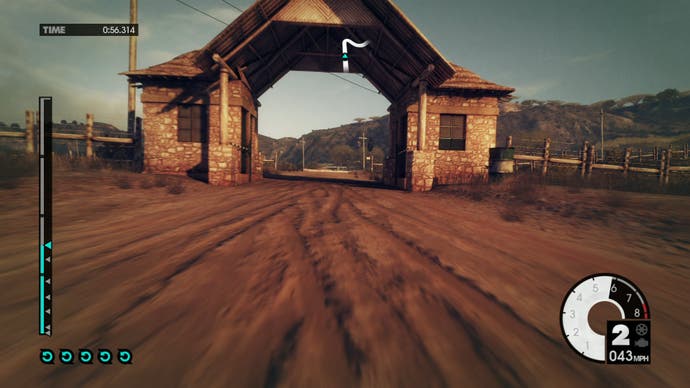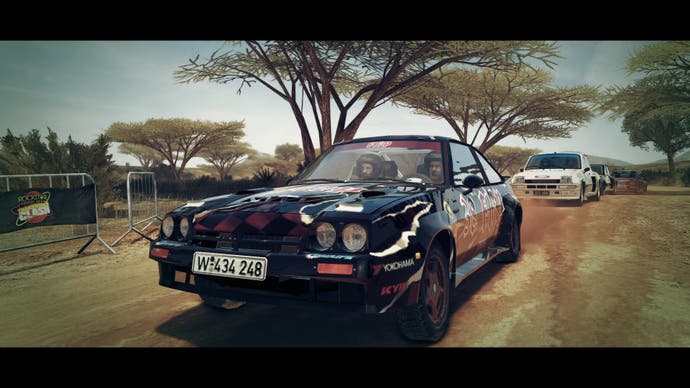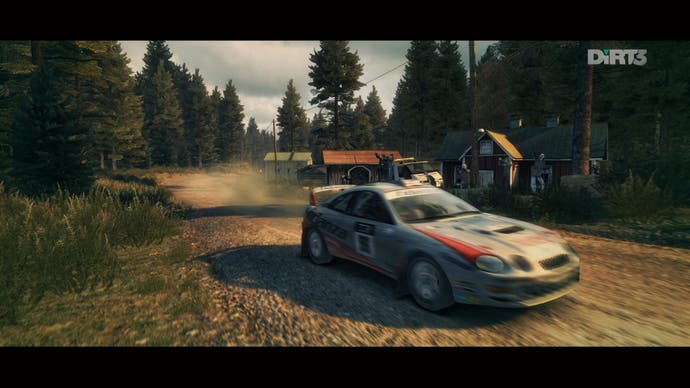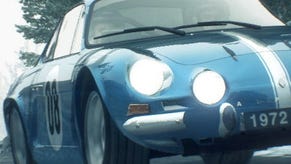Face-Off: DiRT 3
Photo finish.
On the whole though, performance in DiRT 3 is rather good on both formats. As our findings demonstrate, the 360 version of DiRT 3 is the technically the superior of the two versions, but in practice this difference accounts for very little in tangible gameplay terms across the overall run of play - DiRT 3 is a highly playable, visually stunning release, and comes highly recommended on both formats.
If the Xbox 360 and PS3 games offer a somewhat equivalent experience, on PC the sky's the limit. A modest dual core PC with an entry level enthusiasts' graphics card can match the console experience, but if you go for Codemasters' recommended set-up of a six core Phenom CPU or Intel i7 combined with a Radeon HD 6930 or NVIDIA GTX280 (though a newer DX11 NVIDIA card might be a better bet), the quality of the visuals ramps up significantly.
Here's a quick comparison movie of the PC version at ultra-high settings up against the console SKUs - alas, direct head-to-head clips at 720p don't really emphasise how nice it looks – richness of detail only really comes into its own at higher resolutions. Indeed in many ways, this vid serves to illustrate just how good the console versions are. However, higher precision effects and lighting are evident, and is with any racing game, moving to higher resolutions at 60FPS really makes a big difference to the way the game looks and plays.
So, not a massive difference here then, though you can see the higher precision more clearly in the DiRT 3 triple-format comparison gallery. However, if you've got the requisite 651MB of bandwidth, PS3 owners can download this 1080p60 video of PC DiRT 3, designed for playback on the Sony console but also compatible with PC so long as you have a decent h264 decoder. It's very, very nice and beautifully demonstrates the leap in visual quality the computer version offers over the console games.
Codemasters' support for PC is impressive, with the developers opting to pursue DirectX 11 rendering technology during the development of DiRT 2, as part of its plan to transition the EGO engine across to the forthcoming next gen consoles (the new Xbox will almost certainly be based on DX11 rendering principles). In the here and now, this translates into a number of enhanced visual effects based on tessellation, multi-threading the command pipeline (giving a significant performance boost) and also in DirectCompute shaders.
The effect in DiRT 3 isn't exactly revolutionary, but it does serve to give an extra level of fidelity to the visuals. However, there are still complaints from the user base about a general level of instability in the DX11 codebase that causes multiple crashes - a DiRT 2 issue that some say persists into the sequel.
While the PC version is clearly the most technologically advanced and visually impressive version of the game, it's not completely beyond criticism: the 16x anti-aliasing option killed off all 3D elements of the rendering in our GTX580 Core i7 test system (even with a system restart), necessitating a tweak to the config file in order to revert it - somewhat annoying, to say the least. The game uses Games for Windows Live (even if you download it from Steam, as we did), and while we don't have any particular issue with this infrastructure, many people do.
In terms of other rendering options we might expect from a PC game, as of right now there's no official stereoscopic 3D implementation for the game, although you can run the game at 120Hz plus AMD's multi-screen EyeFinity tech is also supported. While there isn't the same leap in quality that there is between 30FPS and 60FPS, it is eerily smooth and definitely adds to the sense of realism if you have the necessary PC hardware available.




In conclusion, DiRT 3 is a deeply impressive game, no matter which platform you play it on. Taking top spot on the podium is the PC version: it scales according to the hardware you have available and even a reasonably old games computer should be able to provide a console quality experience. There's a rule of diminishing returns on how much extra visual loveliness you get from the game as you throw more processing power at it, but 1080p60 gameplay is simply head and shoulders above the same game on console.
The difference between the Xbox 360 and PlayStation 3 versions isn't so pronounced. The Microsoft platform has a sharper image and lower levels of screen-tear, making it marginally the better game, but on the flipside, for the racing purist, the PS3 supports a much more robust range of steering wheels.
Over and above the platform comparison aspects, the good news is that the real heart and soul of the sport partially lost in DiRT 2 has been found again. The decision to blend in alternative racing events and spin-off challenges with plenty of traditional point-to-point rallying was definitely the right one. There's something for everyone in DiRT 3: accessible enough to the masses, but with enough challenge and depth to appeal to rally gaming traditionalists.
Many thanks to David Bierton for his significant contribution to this article.



